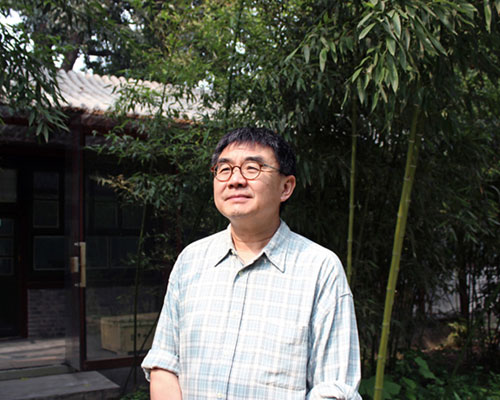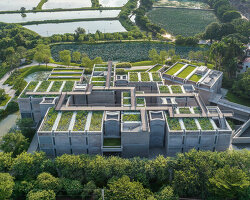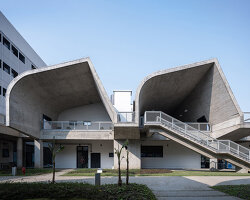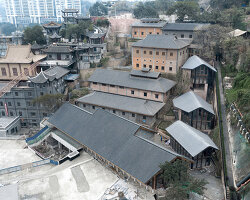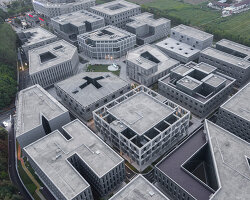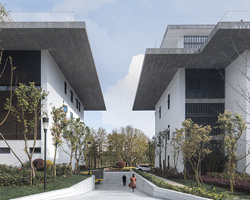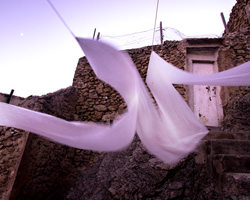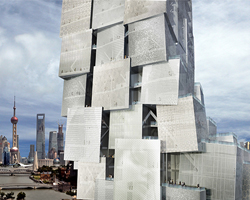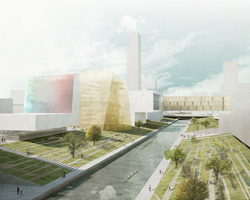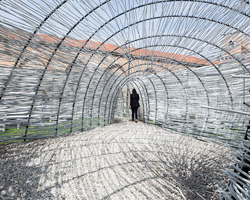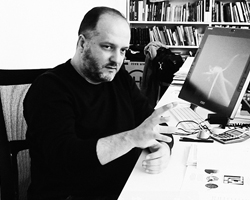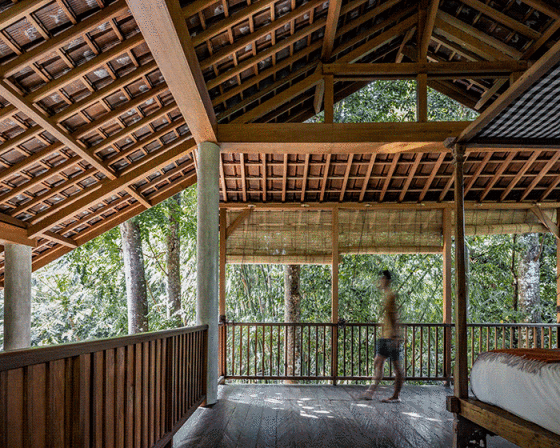TCA think tank interviews yung ho chang from atelier FCJZ beijing
image © pier alessio rizzardi
all images courtesy of TCA think tank
‘when you find a piece of stone which is three or four hundreds years old, then you understand the notion of time as more than what we can experience as human beings. at that moment the old thing might be beautiful, it might be ugly. it doesn’t matter, but it gives you a sense of profound time, and then you understand your history and ancestors that lived in a different world, different from the one we are in now.’
-yung ho chang-
no time for thinking:
PAR: how has the insistent demand for architectural projects changed the way you do architecture?
YHC: working in china, I think that every architect is affected by the speed, by the volume and by the quantity. that’s the reality. in the case of my office it seems we never can have the work done fast enough, so we have to add more and more people so we can work faster but it’s still not, not fast enough! [laughs] I’ve been trying but, on the other hand, I will probably fail anyway.
PAR: despite this, your designs look like they have been deeply thought out.
YHC: I’ve been trying for a long time to have an inner private biological clock; of course it works slower than the pressure of the project out there. it is not that I can slow the project down, but what it does for me is that it allows me to take on something that I’m very much interested in. ‘the beijing sky’
YHC: you have been back and forth between europe and china a lot right? did you spend long periods in beijing?
PAR: no, I used to live in shanghai. I visited beijing many times.
YHC: when was your first time in beijing? I’m curious.
PAR: my first time in beijing was few years ago.
YHC: but anyway, you never saw the beijing I saw (smile). it is very different, very very different. it was very pretty, but actually now it’s very ugly.
‘interview: yung ho chang / atelier fcjz’
video courtesy of TCA think tank’
PAR: what happened when you came back from your teaching experience in the us and you faced the chinese reality?
YHC: when I came back to work in the 90s i really didn’t recognize it, even though beijing is my hometown. the impression a particular environment has on someone is very profound. I couldn’t forget even a bit of the old beijing, even though I’ve been living in the contemporary beijing for all these years. they are like two cities, and the question is, what should we do? how do we deal with the architecture that we have to put in the contemporary city of beijing?
PAR: how should the design approach be?
YHC: I’m still searching for it, but I think that I have a clue now. the light. the light changes very much in beijing on days like this – [yung ho chang looks outside, the weather is hot and humid, the sky is covered] before, in summer, we would never have this light, this is a different climate, this is a different sky, so the quality of life is different. I don’t think I can get that back, but i think that architecture has to change the way the building catches light. […] so I’m thinking of a very different way of making: bringing light inside. I’m working on some designs based on this concept, so we’ll see, maybe I could succeed, maybe not! [laughs]
PAR: what is your idea of the ‘new beijing sky’?
YHC: if an architect designs the ‘perfect skylight,’ that might be the last chance for a person in beijing to make a connection [between nature and home]. that connection is no longer done by trees because you are in high-rises. trees are all there somewhere below. if you can, somehow, make a connection with a window to the sky, then you’ll still have a dialogue with the nature. I’m actually doing some design using your question as something to pursue, so we’ll see.
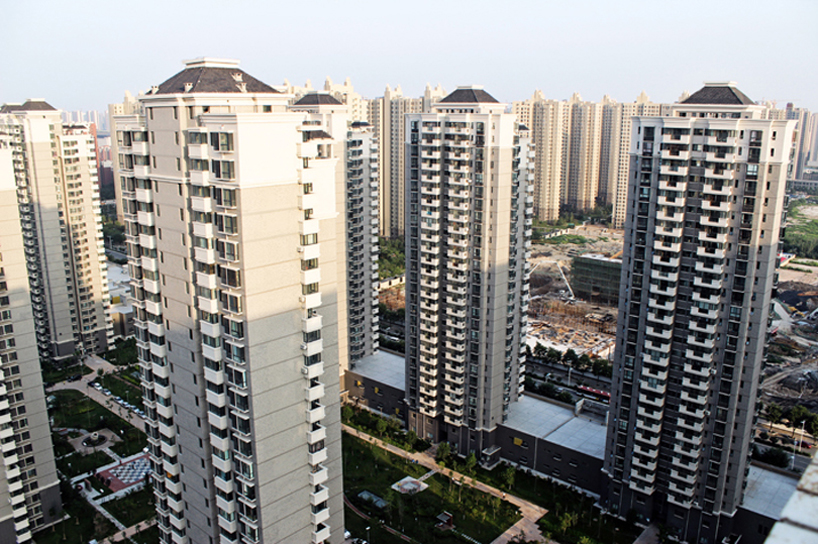
demolition and re-construction in qianmen, beijing
image © pier alessio rizzardi
objects and the city:
PAR: what is iconic in china?
YHC: the iconic buildings, as glorious as they are, I’m not sure what they really contribute to the city. they are monuments, they are icons. if I want to meet someone to have italian food, that’s more important than being stuck in traffic and looking up to a big urban icon. I think it is possible to do little things with buildings. the key is to do something that is manageable and then you won’t give up the whole battle!
PAR: how can ‘little things’ in architecture make a difference?
YHC: there is a wrong vision for the city of beijing and for chinese cities altogether. there are some issues that an architect or just an office, whether big or small, wouldn’t be able to impact. the kind of grandiose spaces and big objects, they are not made for livability, they are like monuments. maybe they are made for the success of the chinese economy, but they don’t give the people a comfortable life.
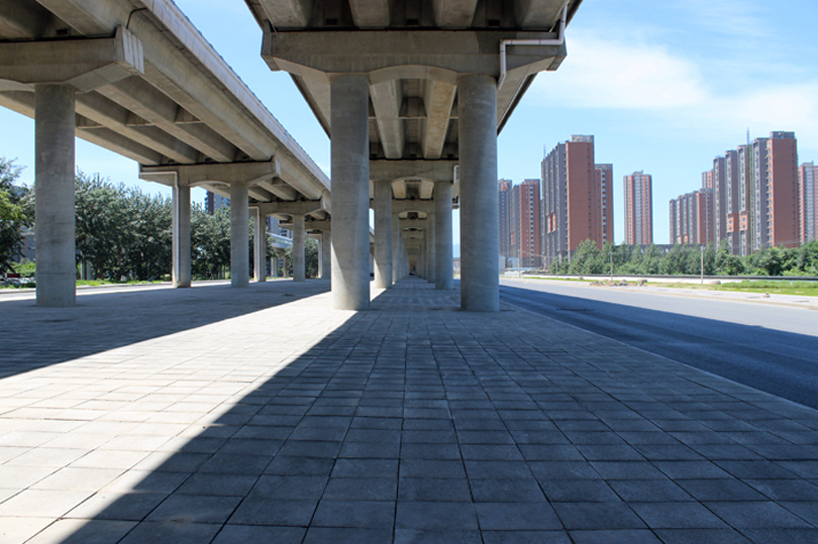
beijing sky and linking hybrid
image © pier alessio rizzardi
PAR: how do you try solve the problem?
YHC: for things like this we can do very little, but we are trying very hard. for instance in shanghai we are building a small 40×40 meter block on a 10-meter wide street and along the street the sidewalk is always covered by a canopy. we didn’t really invent this, this is a pretty old way to make a city where people like to walk, like bologna in italy.
PAR: do you think chinese architects have more or less impact on architecture as the western ones?
YHC: probably not more. I think, again, volume (if an architect is working in a repetitive way) really doesn’t count unless someone is possibly thinking about another version or a new idea of the city… then chinese architects are doing something that is out of reach for western architects. in the end most chinese architects do repetitive work. they build a lot, but so what? in the end, it doesn’t contribute to the quality of life so much; it doesn’t push the culture forward. that’s one big missing opportunity for chinese architects.
PAR: so in other words, they are constrained?
YHC: yes, but there is a contradiction. chinese architects have less freedom in designing the space but they have more freedom in terms of façade form making, but it is not reasonable. clients are very open in terms of different styles, so chinese architects in a way are able to play with stylistic things on the surface. there are codes and regulations that would not allow architects and engineers in china to be inventive. it is an issue of the building’s structural system, of course, space and other aspects that would make a building different.
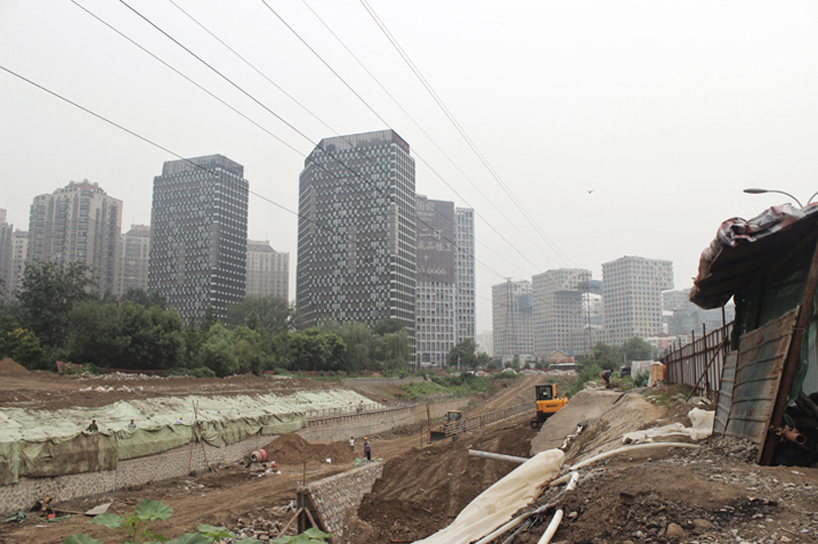
high-rise in beijing
image © pier alessio rizzardi
starting from scratch:
PAR: what is your point of view on the issue of demolition and context (or non-context)? when you are going to build you don’t exactly know what is really there or what will be there in the near future, for a european like me it would be quite a big deal.
YHC: the demolition is a huge problem both urbanly and culturally. for someone from italy it is very easy to understand. […] when we say culture, what would be the next word? history. can you imagine culture without history? [laughs] what is simpler than that? but what is history then? history it is not a word in a book only, history is the artifacts from which you can get a sense of time. […] living in a city and having a look at a piece of stone. when you find a piece of stone which is three or four hundred years old then you understand the notion of time as more than what we can experience as human beings. the old thing might be beautiful, it might be ugly. it doesn’t matter, but it gives you a sense of time, then you understand your history and ancestors that lived in a different world, different from the one we are in now.
PAR: what is a city without history?
YHC: I think the demolition of the past pretty much makes history, time, culture all abstract; so you can use all these words, but you cannot really understand them. there is nothing left for you to make that connection. everything becomes instant. I think that’s a huge problem! nothing we can do about it, even if we can reconstruct architecture and buildings very well, there are gonna be new buildings; still that sense of time will be forever lost. my fear of course is: are we getting more civilized or are we getting more barbarous? that’s a big question today, not only for china of course, but for a lot of other cultures. it is an open-ended question… I think from time to time unfortunately we see the answer, and it is not totally optimistic, of course.
PAR: how does this loss affect society?
YHC: the problem of today is the tremendous loss of the physical history of a nation. that’s why today we look at the western culture, and I think often that people in china feel inferior. if they had a chance or rather if they had the curiosity to actually go into a museum and see the national treasures of arts, it would make them feel very differently. I was very lucky I felt in that way.
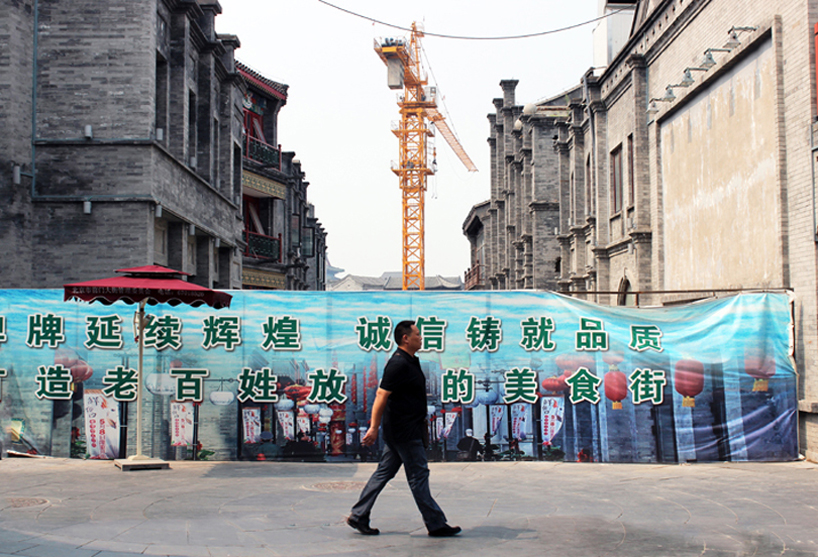
residential real estate in beijing
image © pier alessio rizzardi
PAR: many people don’t realize this connection. what do you think is the reason for this?
YHC: I think a lot of people here, they see their existence through numbers. how much money does one have? it’s like in the book the little prince [by antoine de saint-exupéry]. he described these little planets and all the people counting: there is the banker, his life is about counting. […] here we have a lot of that. the interesting thing is that, with all the accumulated wealth, a lot of people are getting very rich in china, but fewer people are getting a better life, because without culture, without this sense of history, they don’t even know what is a good life! they always buy something really big! [laughs] this fascination with size tells so much about this inability to imagine the quality of life. it is always the same, and that would be: getting a louis vuitton bag! there was a foreign journalist who asked me, I thought it was a very western question: what is the dream of the chinese people today? I told him a louis vuitton bag; he didn’t believe me! [laughs] ok, there is a bigger one – that is a mercedes-benz car, right? of course it shouldn’t be like this… right? but now without culture and with this big void it can only be like that, if they are lucky, they have money! this is just for now, hopefully, but it is very bad! [laughs].
PAR: is the chinese condition of uncertainty a boon or a limitation to creativity?
YHC: it is a double-edged sword, but in my case I have to tell you – I studied with rodney place, a teacher from the AA, whose studio was called ‘lab of uncertainty’ in the early 80s. I learnt from him to take uncertainty from the point of view of doing creative work – I think today is about uncertainty, the short life of the building, any many other things that are changing the way we look at design, but, however, I don’t think it should really affect the quality, but rather create a different way of how to look at architecture.
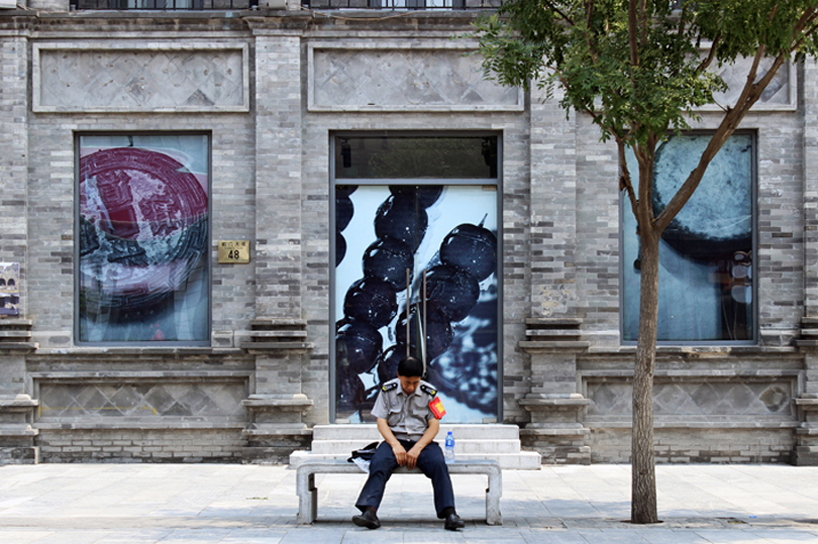
retail in qianmen street in beijing
image © pier alessio rizzardi
the next generation:
PAR: what are some common features in the latest generation of chinese architects?
YHC: these architects, I think, are too young to find a common thread, but I think one thing is (I’m not criticizing them, because I myself am included in someway) that they have a lot of western influences. we’re in the era of the globalization, and a lot of people, like myself, studied abroad, so we were and we are still exposed to a lot of western cultures. a common thread for almost everybody… except for liu jiakun and amateur architecture.
PAR: even the previous generation had a big influence from the west.
YHC: yes, but what I think is different is that now there is a renewed interest about materiality, material technology, and structure. these issues were, actually, the problems for chinese architecture for many years. chinese architects with beaux-arts education and with the old economy pretty much gave up the materialistic side of architecture. they did just literal forms of traditional architecture, using concrete but without paying attention to the expression of materials. it is pretty difficult imagining that now, perhaps, but for all that time it was the case.
PAR: there was a disconnection between materiality and design…
YHC: when I started in the early 90s, most architects worked like this. for instance when they put tiles on the building… if you ask some of them: ‘why did you put tiles?’ they would say… what tiles? they don’t even see them! they didn’t draw them down. tiles were just something to protect the surface of the building so the manufacturers put them up. again, they don’t even see them. it is remarkable! so today, if anyone of us would use tiles, we would design it so the bloody tiles dance! [laughs] god knows how many ways there are to do tiles… this is a major change from the older generation.
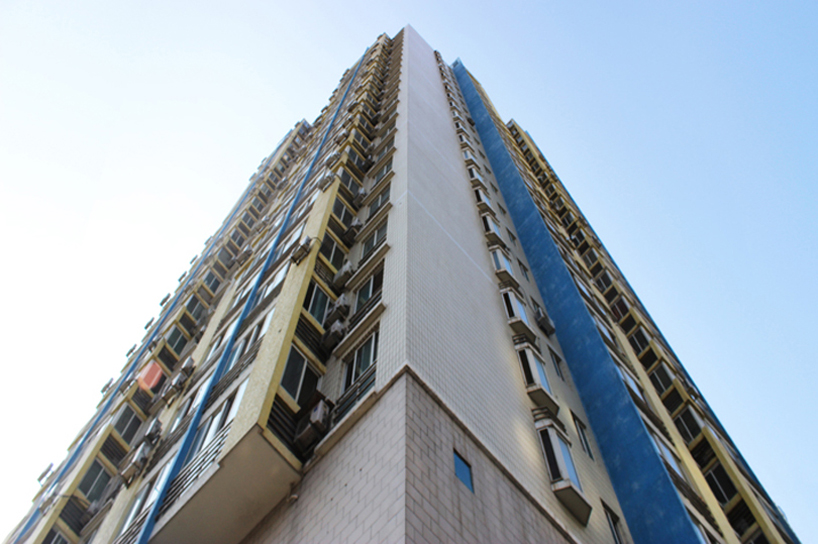
residential super-blocks in xi’an
image © pier alessio rizzardi
PAR: what can be learnt from the chinese architectural experience and what can be imported from china to the west?
YHC: it might be really interesting in the west to understand the mistakes made in this particular period in china and then not to do them. when china started its urbanization, we could have learnt all the mistakes made in the west, but of course we didn’t. nobody knows what is the contemporary chinese culture, so with this opportunity there are many examples of experimentation that we see in china, maybe you can say that some of them are real contemporary chinese architecture… I think the experimentation and the variety of design is a phenomenon that the west can study.
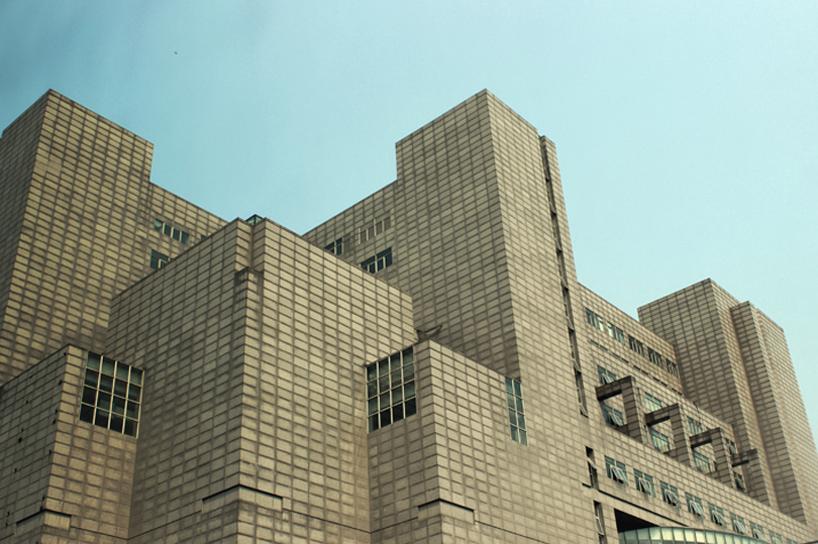
tiles, building from the first generation in beijing
image © pier alessio rizzardi
‘1966-1976 museum bridge in anren / atelier fcjz’
video courtesy of TCA think tank
designboom has received this project from our ‘DIY submissions‘ feature, where we welcome our readers to submit their own work for publication. see more project submissions from our readers here.
ATELIER FCJZ (34)
TCA THINK TANK (8)
PRODUCT LIBRARY
a diverse digital database that acts as a valuable guide in gaining insight and information about a product directly from the manufacturer, and serves as a rich reference point in developing a project or scheme.
